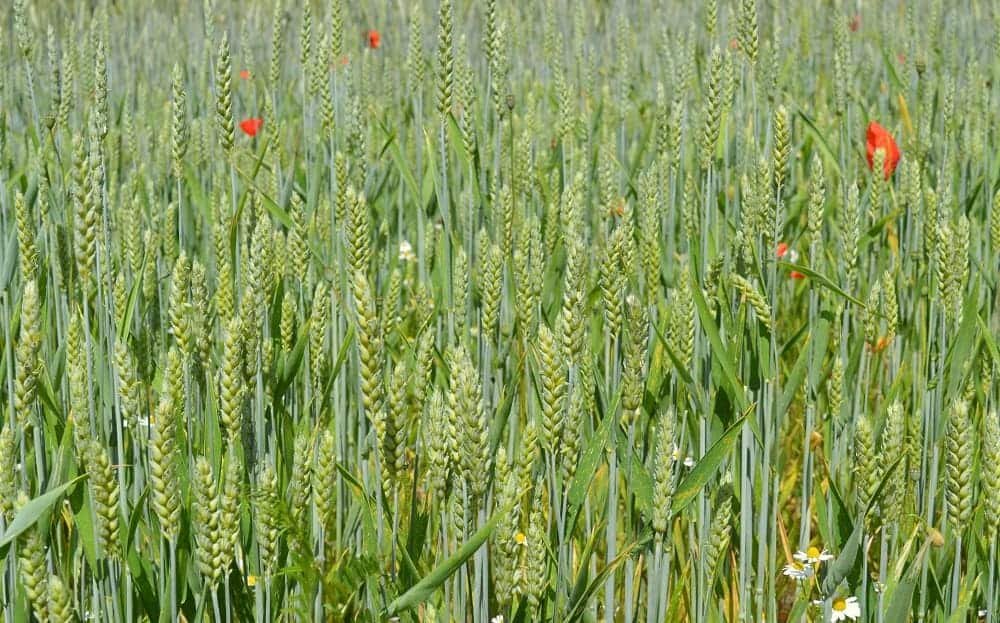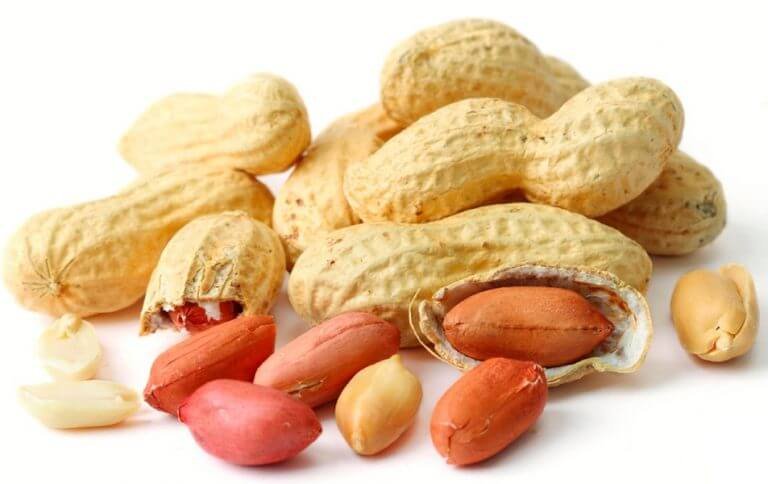Guide to Growing Wheat: Techniques and Tips

Wheat is one of the most widely cultivated crops in the world, providing food for humans and animals, as well as raw materials for many industries. Growing wheat successfully requires some knowledge of the plant’s life cycle, soil requirements, pest and disease management, and harvesting and storage techniques. In this guide, we will cover some of the basic principles and tips for growing wheat in different regions and climates.
Overview of the Wheat Crop
Wheat has been a staple food for many civilizations in Europe, the Middle East, and North Africa and remains one of the most widely grown crops in the world. It is interesting to note that wheat grows on every continent except for Antarctica. Wheat has advantages over other crops, such as its ability to grow quickly in temperate climates and its ease of storage once harvested. Additionally, its versatility in being converted into flour allows it to be used in various foods.
Wheat is a nutritious and commonly grown cereal grain cultivated for over seven centuries in various countries. It is one of the most crucial crops globally and is the second most produced grain after corn. Wheat is a vital part of the diet for many regions and provides 20% of the daily protein intake for people worldwide. Its capability to adapt to different soil and climate conditions makes it a popular choice for consumption.
How Long Does it Take to Grow Wheat?
The maturation period for wheat is typically around four months. However, determining the optimal time for harvesting the crop requires the farmer to know when it has reached its peak quality. A dry and hot climate can accelerate the final stages of growth.
Main Uses of Wheat
Growing wheat effectively can be beneficial in many ways. Most of the world’s wheat is used for human consumption, mainly for food. It’s a staple food rich in essential vitamins and minerals and can be used to make bread, biscuits, cakes, and even animal feed. Wheat is not only used for food but also has other uses. The gluten and starch present in the grain makes it elastic and capable of absorbing water.
A certain amount of wheat production is set aside for animal feed, specifically poultry, and livestock. Wheat middling, a byproduct of flour milling, is frequently included in animal feed due to its high protein content.
Wheat can be transformed into ethanol, a biofuel that can be used instead of or in addition to gasoline. As of 2020, approximately 5% of the world’s wheat production was utilized for ethanol production.
Wheat straws and chaff can be used as raw materials to create biodegradable plastics. These bioplastics are a great alternative to traditional petroleum-based plastics and are environmentally friendly.
Wheat straws can replace wood pulp in paper production, reducing deforestation and promoting eco-friendly manufacturing. It also can be used as a building material and industrial absorbent. It’s more environmentally friendly compared to synthetic materials.

Types of Wheat
After being ground into flour, it is difficult to tell the difference between red and white wheat kernels, except for their protein content and taste. Red wheat has more protein and gluten, resulting in a nuttier and slightly bitter flavor, while white wheat tastes milder.
Hard red winter wheat is a type of wheat that grows during the fall and is harvested in the spring. Due to its robust qualities, it is ideal for making rustic bread such as sourdough.
Soft red winter wheat is a variety that retains all the delicious flavors of the hard type. However, it is easier to mill, resulting in a smoother, softer texture that is perfect for making cookies, crackers, and cakes.
Hard red spring wheat has high gluten content. This type of flour is ideal for making bread and pastries that require some elasticity, such as croissants and pizza dough. It is known as hard red spring wheat and is primarily grown in the northern regions of the United States and Canada during spring. Growers who know how to harvest wheat, understand that this type is usually ready for harvest in the fall.
Soft white wheat is ideal for creating crumbly, melt-in-your-mouth pastries, yeast bread, and snack foods. It’s commonly used in cake and pastry flours and comes in different cultivars of soft white winter wheat and soft white spring wheat. Unlike other types of grain, soft white wheat is not referred to by season in everyday conversation.
Durum wheat is a tough strain with a unique protein structure used in fresh pasta and Middle Eastern/Mediterranean flatbread. Semolina, made from the middling of durum milling, is used for couscous and some pasta. Bulgur, made from cracked and parboiled durum wheat berries, is a staple in Levantine dishes like tabbouleh and kibbeh.
How to Grow Wheat – The Right Technique For Growing Wheat
Choose a location with fertile soil for successful wheat farming. Look for loam texture, proper structure, and moderate water-holding capacity.
The soil should be prepped with a disc or moldboard plow and one deep plow followed by 2-3 light plowing and planking. For better soil quality, it is advisable to use 50kg of nitrogen, 25kg of phosphorus, and 12kg of potash per acre. Moreover, enhancing the organic content of the soil can also be advantageous.
Wheat plants can grow in various climates and prefer moist, cool conditions. The optimal temperature for wheat farming is 21°C to 26°C. Selecting the appropriate type of wheat is crucial based on your area’s weather patterns.
Make sure to buy high-quality, disease-free wheat seeds with a high yield. The amount needed for an acre varies based on the variety and sowing method but usually ranges from 40-50 kg.
Plant seeds 4-5 cm deep, 20-22.5 cm apart in rows for optimal wheat growth. Sow at the right time (end of Oct/early Nov in India), and grade/clean seeds before planting.
Apply fungicide to treat seeds. Aphids, termites, and diseases like brown rust and powdery mildew can attack wheat plants. Use high-quality pesticides or consult with experts to control them.
No matter how long wheat take to grow, harvest wheat when leaves and stems are yellow and dry. Don’t wait too long, or yield may be lost. Harvest when the moisture content is 25-30%. Using Combine harvesters can be beneficial for an effective harvesting process. After harvesting, you can use ingredient bins to store the grains for easy dispensing.

Top Wheat-Producing Countries in the World
China produces the most wheat in the world. However, they mainly consume it domestically to meet the growing food demand in the country. China accounts for approximately 19% of global wheat consumption as the world’s largest wheat consumer.
India is the second-largest wheat producer in the world, contributing 12.5% of global production. Russia is the world’s largest wheat producer and ranks third in wheat production globally. In 2021 the country exported wheat worth over $7.3 billion.
Wheat is the third most grown crop in the US after maize and soybeans. In 2021, the US produced 44.79 million tonnes of wheat, grown in almost every state. The average yield was 44.3 bushels per acre, with Arizona, California, and Kentucky recording the highest profits.
France is fifth in the global grain market, with wheat production increasing. Supply reached 36.6 million tonnes from 1972 to 2021.
Ukraine ranks sixth in wheat production and fifth in global wheat exports. The export of grain has been affected by the Russian invasion of Ukraine. It has caused the suspension of export shipments from the region, resulting in a worldwide increase in wheat prices, reaching record highs.
Conclusion
Growing wheat can be a rewarding endeavor because it is a remarkable crop that continues to evolve and adapt to meet the demands of a changing world.
So, if you’re interested in cultivating wheat for personal use or on a larger scale, you must not forget the important factors to consider. From selecting the right type of wheat for your region to preparing the soil and implementing proper planting and harvesting techniques, each step plays a crucial role in achieving a successful yield.
Always remember to embrace the knowledge and techniques shared in this guide as you embark on the journey of growing wheat and you will be well on your way to success as a wheat farmer. Happy wheat growing!





